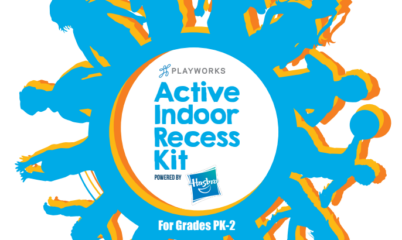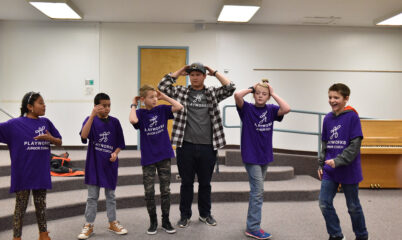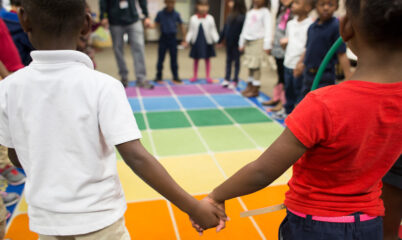In honor of Mental Health Awareness Month, we’re exploring research around this topic and how play (and Playworks) can make a difference.
The urgent need to support children’s mental health
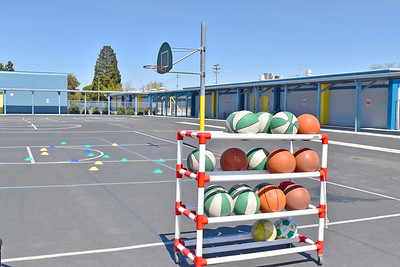 The pandemic increased the loneliness and isolation that people, especially children, were feeling. As children re-entered school buildings, people quickly realized that academic recovery from learning loss and recovery from social isolation go hand in hand. While math scores fell in every state, so too did students’ skill development with typical social and physical skills.
The pandemic increased the loneliness and isolation that people, especially children, were feeling. As children re-entered school buildings, people quickly realized that academic recovery from learning loss and recovery from social isolation go hand in hand. While math scores fell in every state, so too did students’ skill development with typical social and physical skills.
When it comes to mental health, the World Health Organization explains, “Throughout our lives, multiple individual, social and structural determinants may combine to protect or undermine our mental health… Risks that occur during developmentally sensitive periods, especially early childhood, are particularly detrimental… Protective factors serve to strengthen resilience.”
According to the Centers for Disease Controls and Prevention (CDC), “protective factors are individual or environmental characteristics or conditions that promote the health and emotional well-being of children and adolescents.”
The pandemic negatively impacted children’s sense of safety and belonging, essentially eliminating the protective factors previously available to them.
“We need to acknowledge the loneliness and isolation that millions are experiencing and the grave consequences for our mental health, physical health and collective well-being,” United States Surgeon General Dr. Vivek Murthy said in a recent article titled “How Can We Bring an End to the ‘Epidemic of Loneliness’?” (source).
Protective factors can mitigate the effects of risks such as isolation, inactivity, bullying, etc.
Cultivating a culture of connection and physical activity are important protective factors
During the pandemic, daily routines that encouraged social connection and physical activity were disrupted. A large percentage of the population lack adequate social connection, according to the U.S. Surgeon General’s Advisory on the Healing Effects of Social Connection and Community:
“Loneliness and isolation hurt whole communities. Social disconnection is associated with reduced productivity in the workplace, worse performance in school, and diminished civic engagement. Given these extraordinary costs, rebuilding social connection must be a top public health priority for our nation. It will require reorienting ourselves, our communities, and our institutions to prioritize human connection and healthy relationships.” (source)
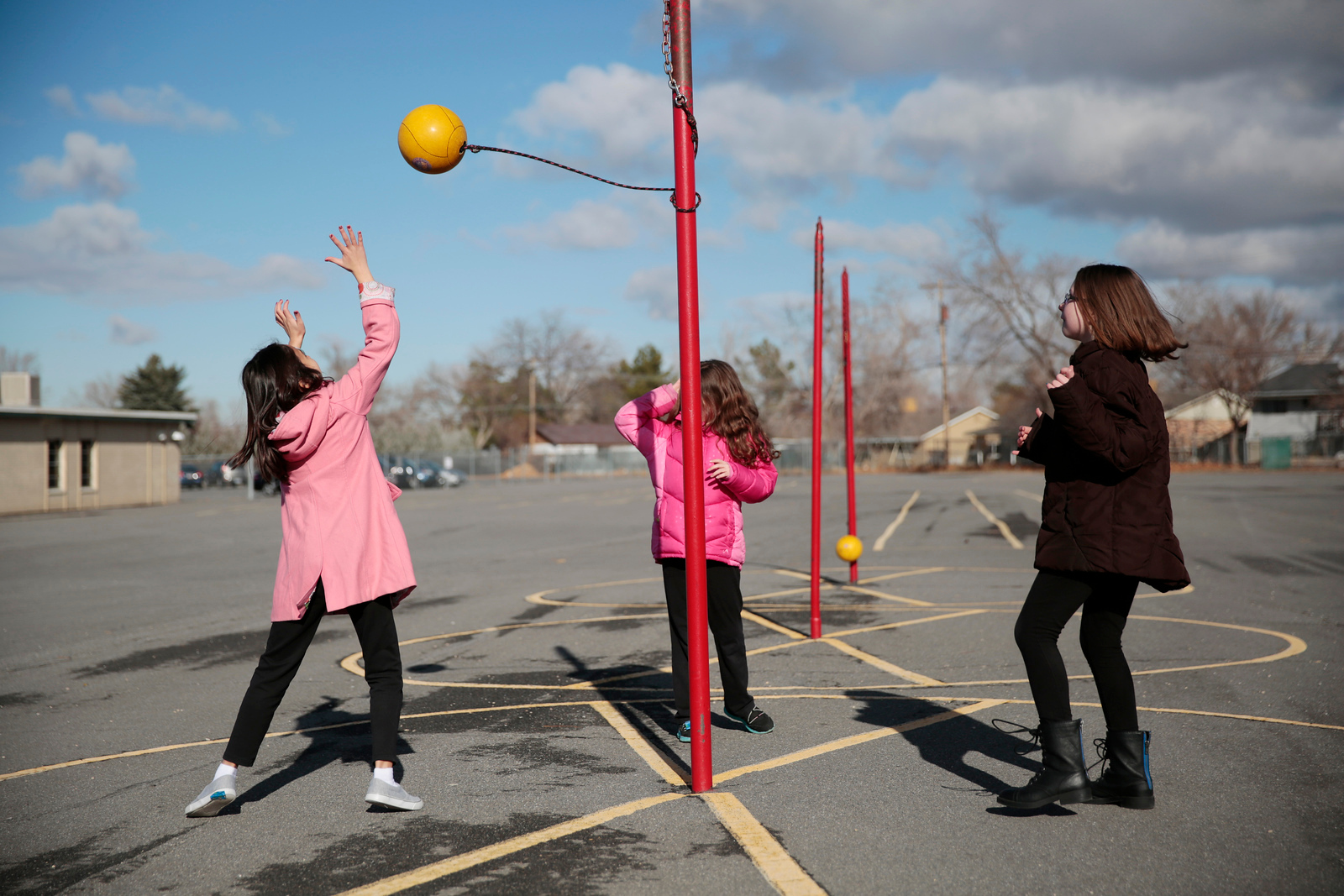 Schools are one community space where kids can develop connections and build resilience, protective factors that support their mental health, according to the CDC.
Schools are one community space where kids can develop connections and build resilience, protective factors that support their mental health, according to the CDC.
As stated in “Physical Activity: An Untapped Resource to Address Our Nation’s Mental Health Crisis Among Children and Adolescents,” Dr. Murthy emphasized that physical activity is a critical but often overlooked tool to support both the physical and mental health of children. (source)
Alison Vaux-Bjerke is currently a Physical Activity Advisor at the United States Department of Health and Human Services and was formerly a Playworks Coach.
She said, “Physically active play can have immediate benefits for mental health for adults (reduced anxiety) and long term benefits for people of all ages (reduced depression for all ages and anxiety for adults). And play can take many forms from a race to the mailbox to a game of basketball. However you can fit physical activity into your day, the benefits will show up. And if it’s fun, you’re probably more likely to build that physical activity in more regularly.”
(Sources: Move Your Way® Teen video; Move Your Way® Feel Better Poster; Move Your Way® Parent Materials)
Play helps kids and adults get physically active and feel more connected
When kids play, they reap multiple benefits at the same time.
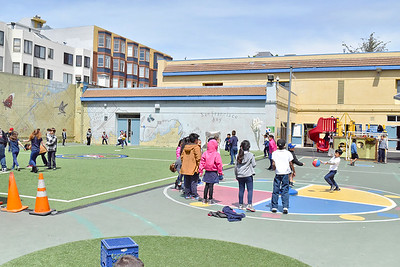
“Anyone who has visited a playground or recess yard can hear and see that physical activity and play are sources of joy and fun for kids. And there is an incredibly broad base of research to support this – physical activity can reduce the risk of depression in kids ages 6-13,” Vaux-Bjerke said.
In order to combat the epidemic of loneliness, the Surgeon General suggests three key priorities as a part of his Social Connection Framework. One of these priorities is investing in social infrastructure:
“We must strengthen social infrastructure — the programs, policies, and structures that aid the development of healthy relationships. That means supporting school-based programs that teach children about building healthy relationships, workplace design that fosters social connection, and community programs that bring people together.” (source)
When kids and/or adults play together, all of these things occur while children are joyous and active.
Playworks programming yields protective factors to support the mental health and physical activity of children
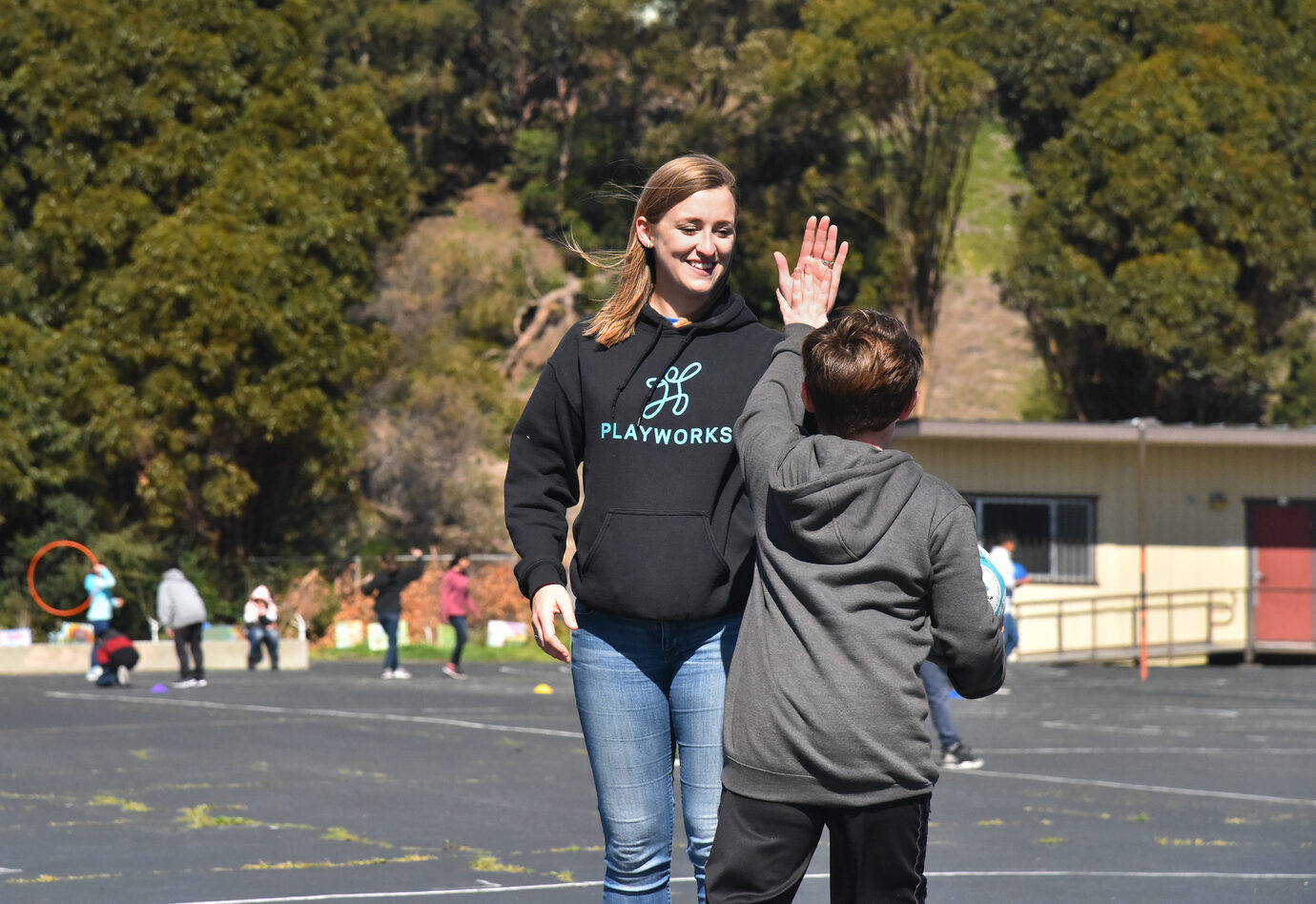 “I think Playworks is a strong example of creating community connection. The reach and presence Playworks has had across the country over the past 27 years shows that it can be replicated in many places and spaces. The emphasis on leveling the playing field through play; engaging parents, teachers, and community members through volunteerism; and emphasizing fun and respect represent an example of the power of play in strengthening social infrastructure within communities,” said Vaux-Bjerke.
“I think Playworks is a strong example of creating community connection. The reach and presence Playworks has had across the country over the past 27 years shows that it can be replicated in many places and spaces. The emphasis on leveling the playing field through play; engaging parents, teachers, and community members through volunteerism; and emphasizing fun and respect represent an example of the power of play in strengthening social infrastructure within communities,” said Vaux-Bjerke.
Playworks partners with schools to increase the physical activity of kids and create a sense of connection and belonging. Many of the outcomes from our programming strengthen additional protective factors associated with supporting youth mental health and wellness including but not limited to:
- Relationships/connections with peers and adults
- Conflict resolution skills and cooperation
- Resilience
- Positive communication
How does it work? The power is in its simplicity. Alison has seen that firsthand, back when she was a Coach on Playworks playgrounds.
“I was not assigned my own school as a Coach, but got to rotate through the different sites and support my peers. I was placed at one school for an extended period due to the other Coach being injured, so I got to be more hands on in coaching the co-ed volleyball team. The kids were so into it that they would want to practice at recess and I would tell them their volleys were, “Beautiful! Beautiful!” I was moved to a different site at some point during the season and on the way to our game site one day, I heard from across the road, “Beautiful! Beautiful!” One of my kiddos from the other school had spotted me and by shouting this simple word, highlighted the power of one caring adult’s investment in a child through play, and how that persists even if the presence changes (e.g., I was still around and could see them at games but not every day at school),” Alison recalled.
Disclaimer: The thoughts expressed in this piece by Ms. Vaux-Bjerke are reflective of her own opinions and not necessarily those of the U.S. Department of Health and Human Services.
